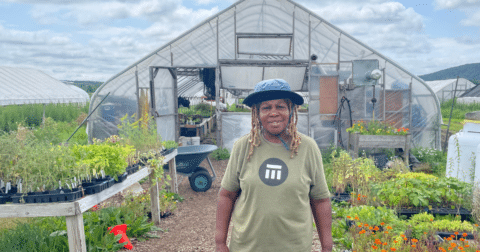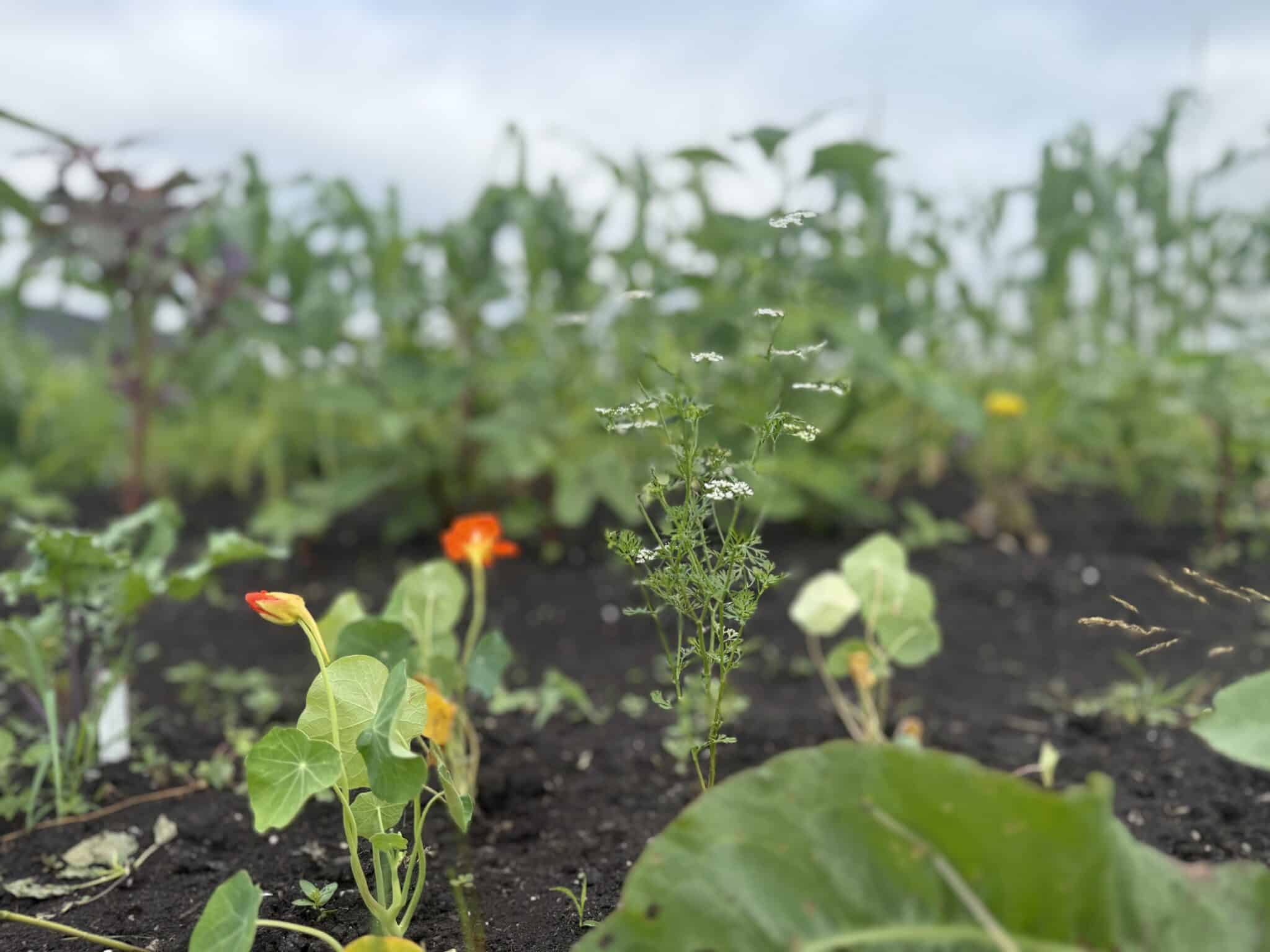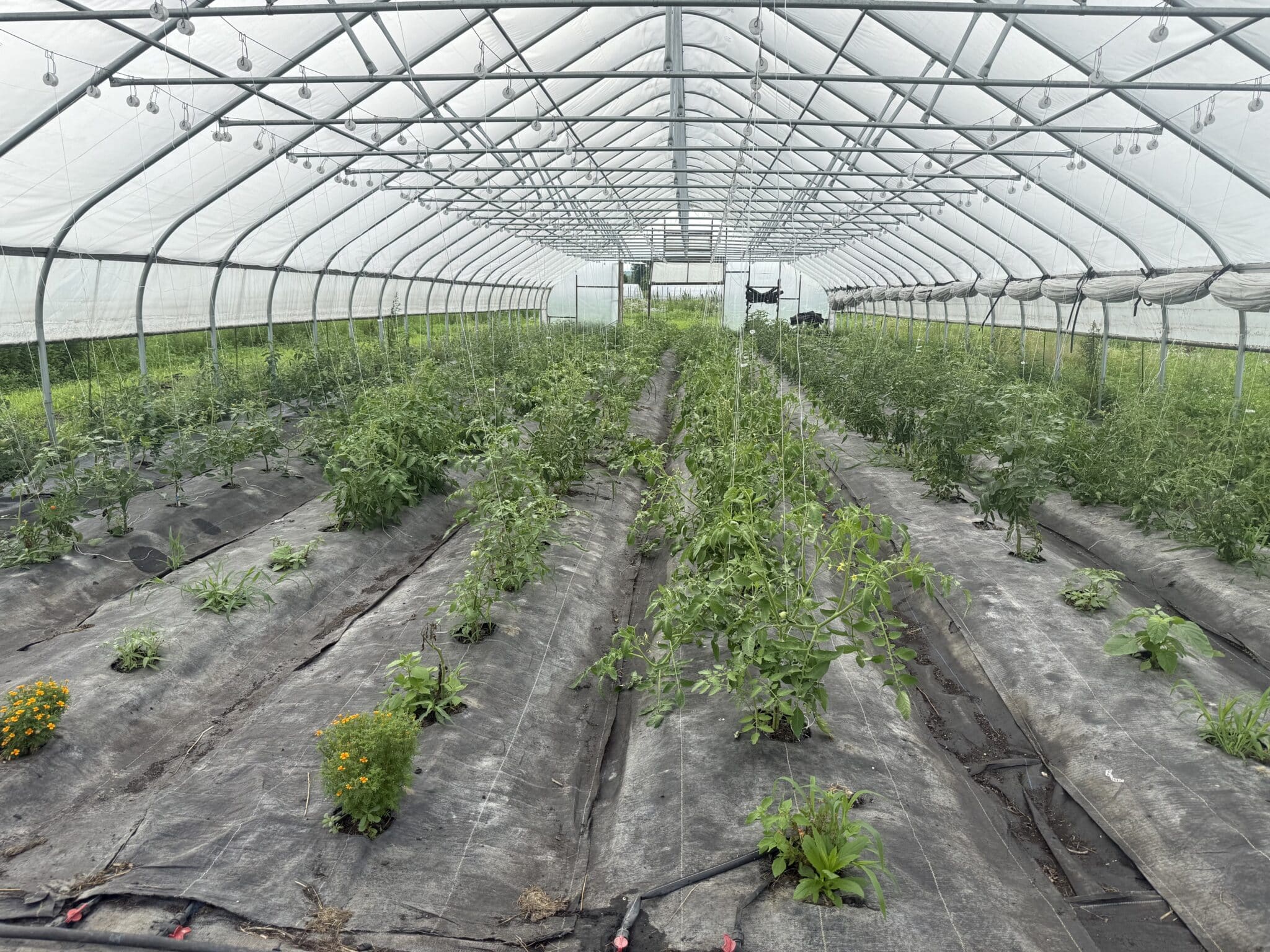Perspective
How Meat Became Cool Again in 2025
Diet•4 min read
Solutions
As drastic SNAP cuts loom, feeding the Bronx more fruits and vegetables is a community-led effort.


Words by Gaea Cabico
In Chester, New York, about an hour’s drive from Manhattan, Karen Washington has just finished harvesting garlic. It’s a Sunday in July, a quiet time on the farm except for the occasional chirping of birds and the hum of passing cars. Wearing floral boots and a fisherman’s hat, Washington is preparing to plant kale, spinach and collard greens — crops she will sell at New York City farmers’ markets and share with her former community in the Bronx. Since retiring from her career in physical therapy in 2014, Washington has co-owned Rise and Root Farm, a cooperatively run, women-led farm with multi-racial owners. They grow organic produce with a mission rooted in justice.
Their harvest helps feed neighborhoods in the Bronx where fresh produce is scarce and ultra-processed foods dominate store shelves, and at a time when the Trump administration’s $186 billion cuts to the Supplemental Nutrition Assistance Program (SNAP), the most drastic in the program’s history, are set to strip benefits for 2.4 million Americans and reduce aid for millions more, deepening food insecurity.
In the East Tremont neighborhood of the South Bronx, it is easier to find chips and soda than fresh produce. For every grocery story in the neighborhood, there are four fast food chains and 10 corner stores, a 2012 survey by the New York City Department of Health and Mental Hygiene found. Quick trips to bodegas often mean leaving with sugary drinks, salty snacks, sandwiches or chips instead of fruits and vegetables. Fresh produce, if present at all, is often limited to a few bananas near the register.
This imbalance stems from the “decades of systemic inequities, historic redlining, disinvestment and zoning decisions,” explained Alexina Cather, a member of the advisory board of the Hunter College New York City Food Policy Center, in an email to Sentient. She said these structural forces have contributed to the rise of “food swamps” — neighborhoods where unhealthy food options outnumber healthier ones — and what Washington and other advocates refer to as “food apartheid,” or areas that lack access to fresh produce and healthy foods due to systemic injustice. It was Washington who coined the term “food apartheid” to highlight not just the lack of healthy food options, but the deliberate discrimination that created that scarcity.
Processed snack foods have been linked to negative health outcomes such as obesity, heart disease and diabetes. These foods often pack plenty of salt, saturated fat and sugar, but lack fiber. The South Bronx ranks among the highest neighborhoods in New York City for premature deaths, diabetes and hypertension.
Research shows that people who follow a diet rich in minimally processed plant foods with modest amounts of meat and dairy face lower risks of early death from cancer, heart disease and respiratory illnesses. In addition to improving health outcomes, a shift toward more plant-based diets also combats climate change, as food systems account for about a third of global greenhouse gas emissions. Those emissions disproportionately affect communities like the South Bronx, where air pollution from highways, limited tree cover and scarce green space make people more vulnerable to extreme heat and other climate disasters.
Before founding Rise and Root, Washington spent over two decades promoting urban farming in New York City — especially in the Bronx, where she lived for over 26 years. Growing tomatoes in her backyard transformed her life. “I grew up hating tomatoes,” Washington says, adding that they had no taste. Heirloom tomatoes, in contrast, may look misshapen, but their flavor is remarkable — “like the sun,” she says. “When you bite into it, you can feel the energy transported from the sun into your body.”
Washington helped transform vacant lots into thriving community gardens and played a key role in launching farmers markets in underserved neighborhoods. She has received both a leadership award and a humanitarian award from the James Beard Foundation.
“I think that we have been just fooled, scarred, traumatized into thinking that healthy food is just for privileged people,” Washington tells Sentient.
Though she now lives in Georgia, Washington returns to farm in Chester from April to October. And in many ways she never really left the Bronx. Her work of growing food and ensuring it reaches those who need it most keeps her deeply connected to the borough. “It’s not food for rich people,” she says. “We want to make sure that our people who have been marginalized get the best food that we grow.”

Every Wednesday, the Mary Mitchell Family and Youth Center in the Bronx distributes free produce from Rise and Root Farm. The program primarily serves Black and Hispanic senior citizens, as well as expecting mothers and young adults picking up food for their families.
If it’s a nice day, the produce distribution program is set up farmers market-style. Aleyna Rodriguez-Sanes, executive director of the center, says it’s about dignity — giving community members the chance to choose what they like and take what they need. Rise and Root Farm collaborates closely with the Mary Mitchell Family and Youth Center to ensure the produce they deliver is familiar and culturally relevant to Bronx residents. Before sending food, they ask what the community likes and will actually use to prevent food waste. Occasionally, they introduce a new vegetable — like purple basil or bok choy — as a learning opportunity, but only one unfamiliar item at a time to make education easier.

Helping people eat healthier food is a “gradual process,” says Washington. “You’re not going to change people overnight, but you can gradually bring them into the conversation. Have them taste the food. Have them see where the food is coming from, have them meet the farmer, have them come to the farm to see exactly what’s going on.”
What these groups are doing is essential, Cather added, as they do not just grow and distribute fresh produce, but “they also build trust, educate families and create safe spaces where healthy food becomes part of community culture.”
In addition to Rise and Root Farm and the Mary Mitchell Family and Youth Center, Cather points to other programs such as the Shop Healthy NYC initiative and Get the Good Stuff that are helping to increase equitable access to healthy foods in New York City’s marginalized neighborhoods. But to make a real dent, Cather believes that the city needs “substantial investment in local food infrastructure, support for neighborhood-led food businesses and policies that address the root causes of health and food inequities, not just their symptoms.”
Rodriguez-Sanes is worried about the implications of the Trump administration’s unprecedented cuts to the Supplemental Nutrition Assistance Program. “It’s really going to be scary as SNAP cuts start to hit the families because a lot of pantries around us have been closing or have less food,” she says. Even before SNAP cuts, the USDA had already cut $420 million in federal food bank funding in March. The Mary Mitchell Family and Youth Center’s own food pantry just closed, having been funded by a small grant only through August 11. In New York City, visits to food pantries have risen 82 percent since 2019.
Nearly three million New Yorkers relied on SNAP as of March 2025, according to New York State Comptroller Thomas DiNapoli. He warned that the proposed cuts could cost the state between $1.4 and $2.2 billion annually.
As benefits like SNAP face cuts and emergency food systems become strained, grassroots solutions are becoming increasingly vital. Washington is quick to point out that urban farming is “not a solution to the problems that we have with hunger and poverty,” which are caused by humans. “People with power, privilege and money” need to “take up the slack” for what’s being lost, she says, by donating to organizations such as soup kitchens and mutual aid.
But, she adds, urban farming is here to stay, and it can change the way people experience food altogether — just as tasting heirloom tomatoes once did for her.